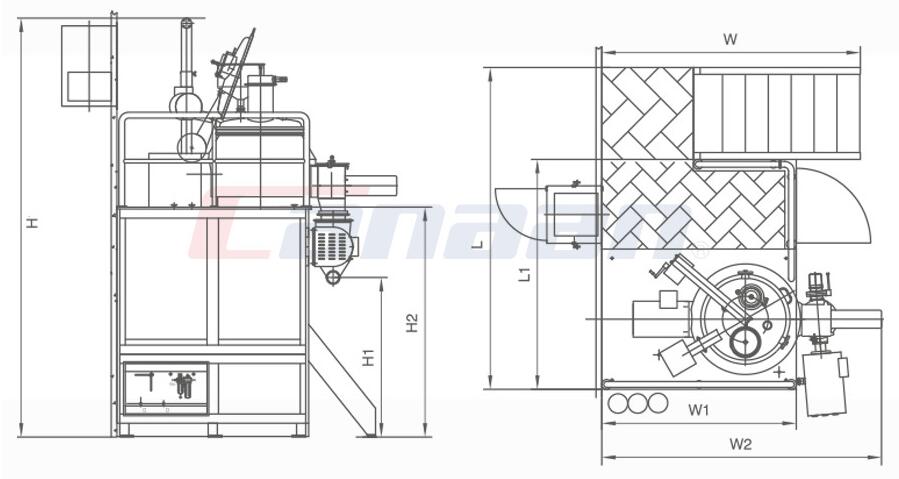Basically the goal of all industrial mixing applications is to obtain a process result with a homogeneous fluid product, i.e. a consistent physical composition throughout the batch. Depending on the characteristics of the liquid and possibly the solids contained in the composition, this can be achieved by using a rotary mixer utilizing either low or high shear mixing techniques. The term shear refers to the stress imparted to the liquid and suspended particles as a result of encountering the mixing blades or impellers, if applicable. The amount of shear is determined by the blade design and its speed.
Multiple Mixing Impeller Designs
Miscible materials that tend to mix due to flow and turbulence in the tank are often achieved using low shear mixing arrangements. A variety of mixing impeller designs are available for miscible fluid mixing and solids suspension. Hydrofoil impellers, marine mixing propellers, axial flow turbines and radial flow turbines are all impeller designs that generate flow.
Low Shear Mixing
For low shear mixing with an electric 5 gallon high speed small batch lift mixer, the hydrofoil provides the gentlest mixing with the least amount of shear. Its blade profile produces nearly uniform flow with minimal required horsepower input, which is particularly effective for materials that can be damaged by high speeds and therefore have higher shear impellers. Large diameter hydrofoils driven at low speeds of one-third the vessel diameter are often selected for mixing large miscible batches for applications. Marine propellers and axial flow turbine impellers are also common. Axial turbines are manufactured similarly to hydrofoils, but have large, flat blade surfaces that contact at a 45-degree angle, so they can push more viscous materials. Primarily used for flow control processes with higher viscosities, the blade edges provide higher shear and require more horsepower to drive them.
High Shear Mixing
High shear mixing is used for components that are not easily mixed. This includes liquids with different viscosities or containing solids that must be broken down or require strong action for uniform distribution.
Dispersion for high shear mixing is a common form of high shear mixing. Dispersion is a high-speed, high-shear process that requires more horsepower to successfully achieve than simple mixing of similar batches. A deep vortex that can be seen on the top surface of the sharp blade is required. As the dispersion blades rotate, particles contact the blades and break up. In the intense turbulence around the blade, the particles collide at high speed and are further broken up. Beyond the blade tip, particles of reduced size are dissolved or dispersed by a horizontal laminar flow extending from the blade. The flow is then divided into two parts at the vessel wall, upward and downward, to ensure complete circulation.
These descriptions of low-shear and high-shear mixing represent the end points of the spectrum between processes driven primarily by flow and those driven almost entirely by shear. The fact is that full continuity between these extremes can be achieved with proper impeller design selection, sizing and stirring shaft speed. For assistance with your specific mixing needs, please feel free to contact one of our customer service representatives or application engineers.


评论
发表评论